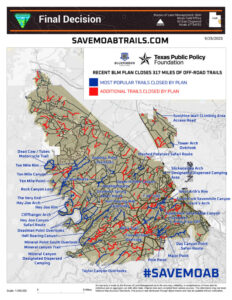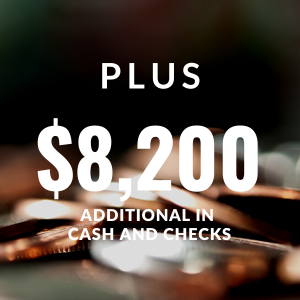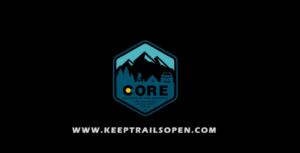Our freedom to roam is under assault from a plan to close everything off and make us ask permission before we enjoy it.
There is a plan underway to close the great open spaces of the American West to you, me, our children, and our children’s children. The federal government — which owns most of this land — is determined to move from a “use and let use” system of accessing Western public lands to a permission-based system that will mean reservations, permits, and closures.
Just last month, the Bureau of Land Management issued a final decision to close 317 miles of historic and popular off-road trails near Moab, Utah. For decades, these trails — which are mostly old uranium mining roads — have been enjoyed by everyone from Jeep owners to dirt bike riders to base jumpers looking for a place to land. They have evocative names like Gemini Bridges, Mashed Potatoes, and Dead Cow Trail. They appear in guidebooks. Some of them are even featured in the hugely popular Easter Jeep Safari.
The plan is already being implemented, and it threatens the freedom enjoyed by tens of millions of Americans who hike, camp, Jeep, mountain bike, ATV, fish, swim, canoe, kayak, trail run, overland, base jump, raft, and backpack the millions of acres of free space that make “the West” the West.
I have enjoyed our public lands my entire life. There is nothing like a sip of coffee as you watch the first rays of dawn begin to break on the red rocks. You don’t realize how tough your kids are until they shrug off a chilly 15-degree night in a sleeping bag. And you don’t really appreciate how unfathomably vast the West is until you spend three days exploring the backcountry without seeing another human soul.
All of these experiences — and many others — take place on public lands. There is no entrance fee. There is no permit required. You just lace up your hiking boots, or jump in your pickup, or hop on your mountain bike, and you go. Simple as that. So long you don’t litter or destroy or cause a ruckus, you are left to your own devices. It is something that unites Americans of every class, creed, color, and political persuasion.
That feeling of expansive freedom speaks to everyone who steps outside to enjoy and explore America’s public lands. It feels like our birthright to enjoy them and, for hundreds of years now, it has been just that.
But now, that freedom to roam is under assault from a plan to close everything off and make you ask permission before you enjoy it. If nothing is done to stop it, one of the last, great, unifying forces in American public and private life will be fundamentally transformed and left unrecognizable before most people realize what is happening.
Zooming out, the aggressive rate of federal trail closures is part of the larger “30×30” plan that President Joe Biden announced shortly after taking office. The alleged intention is to “conserve at least 30% of U.S. lands and waters and 30% of U.S. ocean areas by 2030.”
There is no evidence that users of these trails have been damaging them. Indeed, people cherish these lands. Go drive the trails and you will rarely encounter even a single piece of trash. That is why they have been in use for decades with no appreciable degradation.
Nevertheless, the federal government is now implementing a plan to close hundreds of miles of cherished trails. And that is why the BlueRibbon Coalition — the nation’s premier group dedicated to preserving motorized access to wilderness — has joined with the Colorado Offroad Trail Defenders to challenge the plan in court. They are represented by my organization, the Texas Public Policy Foundation.
What the Biden administration’s plan really means is an aggressive plan to close those lands to use by the public. Well, not to the entire public — crunchy backpackers and hikers are still beloved by the left. But the executive decision will limit access for the “wrong” kind of outdoorsy people — people who drive Jeeps and Toyotas and ride ATVs and dirt bikes, and who look like they might be having a good time without suffering under a heavy backpack.
This seems to be a great paradox to those who do not understand why people love overlanding, dispersed camping, dirt biking, ATV riding, and off-roading, but it is no mystery to those of us who actually engage in these activities. We love the wilderness, too. We love taking our children, friends, and family out there and enjoying fresh air and magnificent scenery. If we come across someone else’s trash, we pick it up. If we see someone breaking the rules (by, say, driving off-trail), we reprimand them.
There are very, very few law enforcement personnel on these lands enforcing the rules. Instead, the motorized travel community self-enforces an ethic of respect for public lands. We teach it to our children. That is why these trails remain so attractive as a place to recreate.
The Moab closures are a bellwether case for protecting access to public lands. The closures represent a provocative challenge to an entire way of life for millions of people in the West. If the Biden administration can close these lands, it can close them anywhere. Americans have shown themselves to be responsible stewards of their public lands, and they deserve to be able to enjoy them — freely — for generations to come.
By Matt Miller, Texas Public Policy Foundation November 2, 2023



